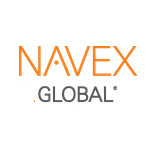 Practical Law will present a complimentary webinar on steps investors can take to gain a more comprehensive awareness of the challenges they face and to protect their investments and rights when investing in a foreign country.
Practical Law will present a complimentary webinar on steps investors can take to gain a more comprehensive awareness of the challenges they face and to protect their investments and rights when investing in a foreign country.
The event will be Wednesday, Oct. 25, at 1 p.m. EDT. CLE credit available is available in multiple states. See the registration page for full details.
On its website, Practical Law says expropriation and resource nationalism, political and civil unrest, war, acts of terrorism, currency restrictions, endemic corruption and weaknesses in governance and the rule of law. These are only a few of the risks that investors must consider when investing abroad.
The failure to properly assess and account for these risks can result in:
A total loss of the investment.
Non-repayment of outstanding loans.
Reputational harm.
Civil and criminal penalties.
Practical Law, Baker & McKenzie LLP and Global Torchlight Ltd. will present the webinar, during which political risk and investment protection experts David J. Chmiel and Ed Poulton will examine the ways in which investors can mitigate these risks including:
Provisions in their loan and investment agreements.
Political and credit insurance.
Reliance on international agreements.
Comprehensive political risk due diligence.
Register for the webinar.
A short Q&A will follow.
Presenters:
David J. Chmiel, Managing Director, Global Torchlight Ltd.
David J. Chmiel advises companies on the effects of geopolitical risk on their business strategies and operations. He has a particular expertise in East and South Asia, Russia, and the CIS as well as the politicization of international commerce and the regulation of foreign direct investment for national security purposes. Before co-founding Global Torchlight, David practiced law for ten years as a cross-border M&A lawyer in the London and Chicago offices of a major global law firm.
Ed Poulton, Partner, Baker & McKenzie, LLP
Ed Poulton is a partner in Baker & McKenzie’s Dispute Resolution team, based in London. A key name in the arbitration community, Ed sits as an arbitrator in ICC and LCIA arbitrations, and is the consulting editor of a seminal text on the arbitration of M&A disputes. He advises clients on managing risk and resolving disputes relating to investment treaties, financial services and M&A.
Erlyne J. Nazaire, Senior Legal Editor, Practical Law Finance
Erlyne is a Senior Legal Editor with Practical Law’s Finance Service and is primarily responsible for writing, editing and curating Practical Law’s project finance and cross-border resources. These resources include practice notes on construction contracts, operation and maintenance agreements, loan documents and project risk assessment. In her capacity as Senior Legal Editor, Erlyne has moderated webinars on cross-border investment issues, financial covenants and public-private partnerships. Before joining Practical Law, Erlyne was an associate in Debevoise & Plimpton LLP’s international practice group where she represented clients in a wide range of cross-border transactions including project finance, private M&A and joint ventures.
Register for the webinar.
 NAVEX Global will present a complimentary webinar on recent and anticipated enforcement and regulatory changes as they relate to third-party risk.
NAVEX Global will present a complimentary webinar on recent and anticipated enforcement and regulatory changes as they relate to third-party risk.




 Most contracts in the construction industry supply chain require the “downstream” project participant to indemnify those “upstream” against a spectrum of losses or claims relating to the project, write
Most contracts in the construction industry supply chain require the “downstream” project participant to indemnify those “upstream” against a spectrum of losses or claims relating to the project, write